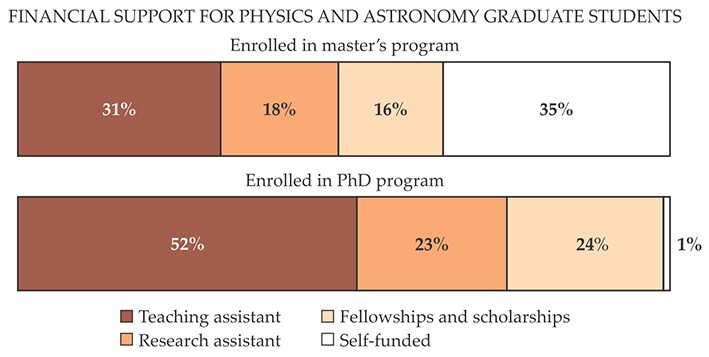Physics bachelors
DOI: 10.1063/PT.3.3362
A recent study by the Statistical Research Center of the American Institute of Physics (which publishes Physics Today) looks at the combined bachelor’s classes of 2013 and 2014 a year after graduation. The study considers students who continued to graduate studies; an upcoming report will look at those who entered the workforce.
Some 53% of the 14 855 degree recipients from those two years were in graduate programs, compared with 61% from the class of 2009. Among those who did continue to a higher degree in 2013 and 2014, nearly three-fifths went into physics or astronomy, with a quarter of those enrolling in master’s programs and three-quarters entering PhD programs. The two-fifths who pursued their educations outside of physics were roughly evenly split between engineering and other fields, including math, medicine, and business.
The figure shows how 2013 and 2014 physics bachelors supported themselves in their first year of pursuing advanced degrees. Here, self-funded includes family assistance, loans, and wages. In other fields, the proportion of master’s students with teaching or research assistantships was lower, and the proportion who were self-funded was higher. Not surprisingly, students enrolled in PhD programs in all fields had far better institutional support; only 1–2% were self-funded.

More details are available in Physics Bachelors: One Year After Degree, available at www.aip.org/statistics/employment/bachelors
More about the Authors
Toni Feder. tfeder@aip.org





